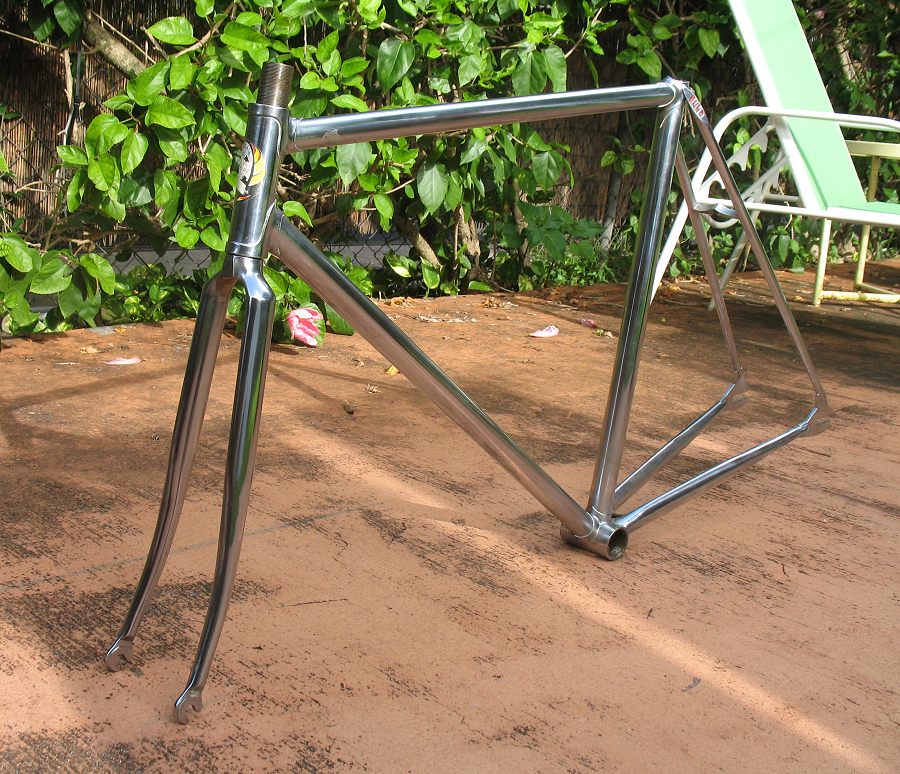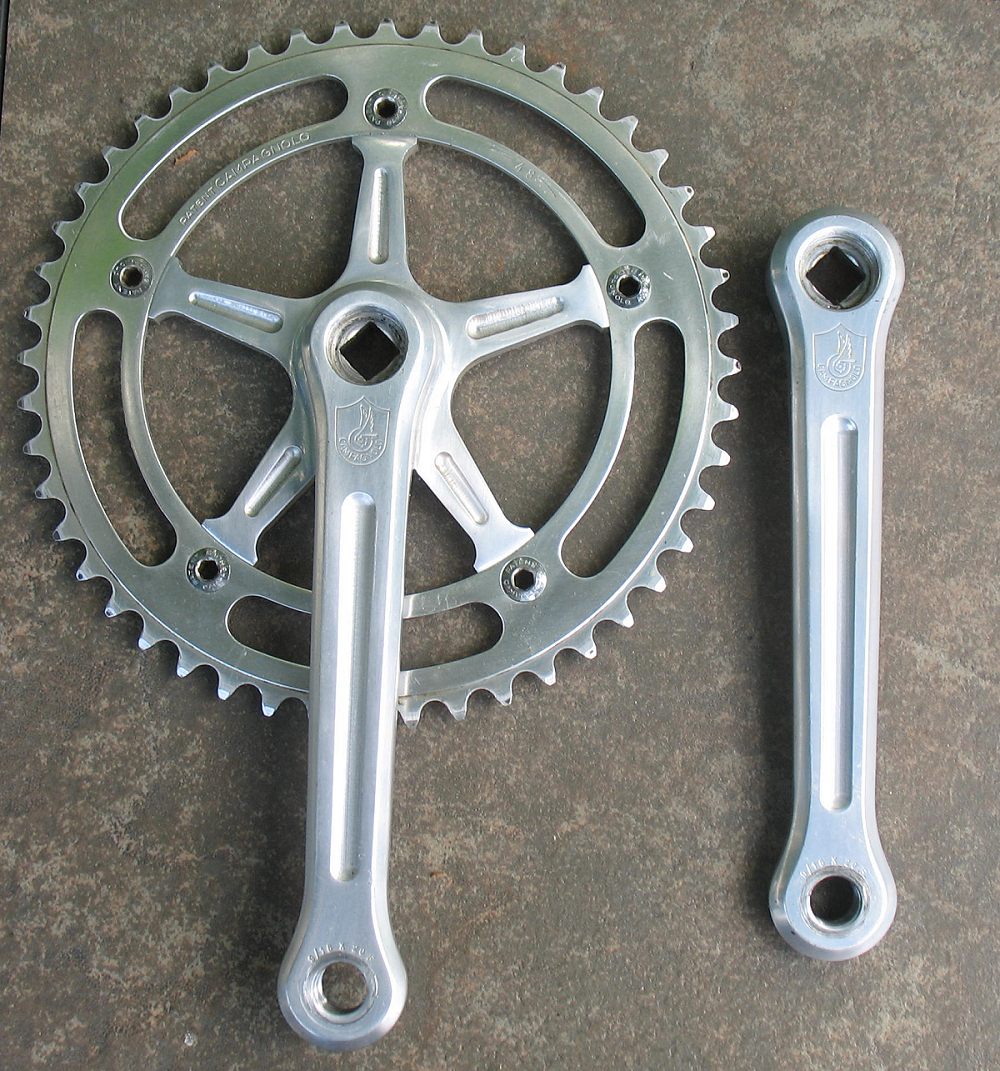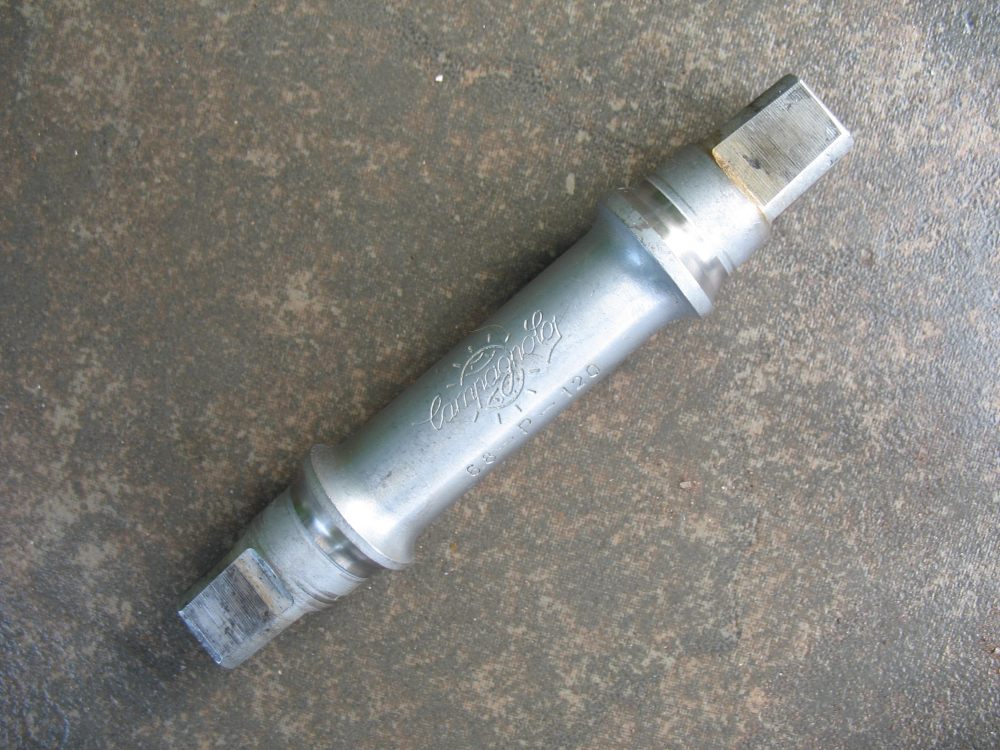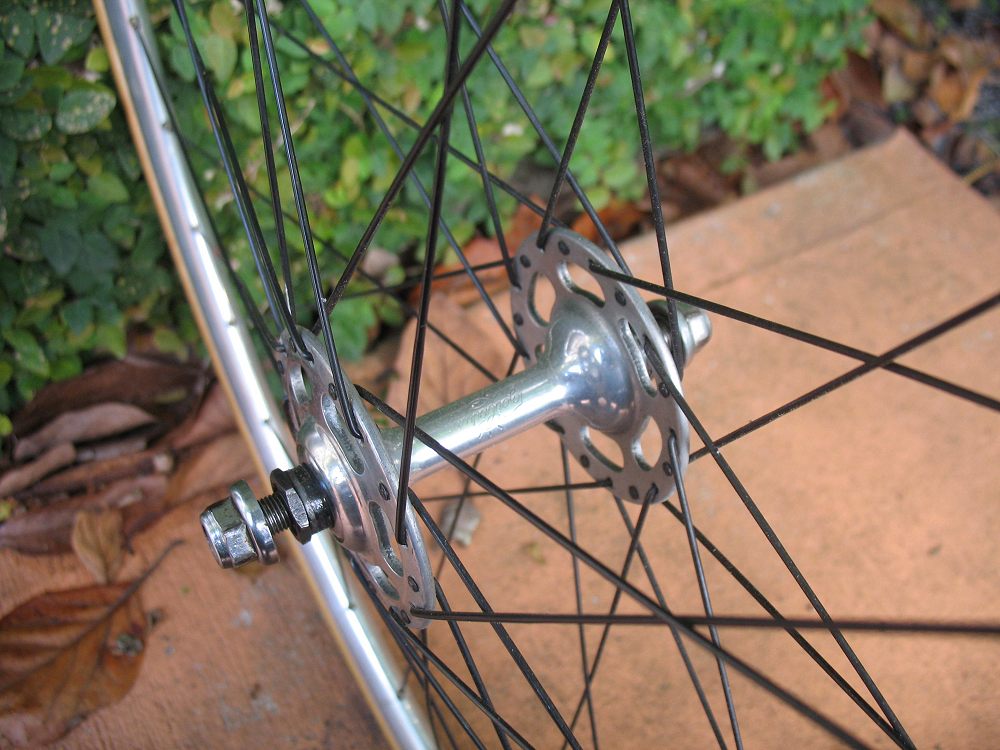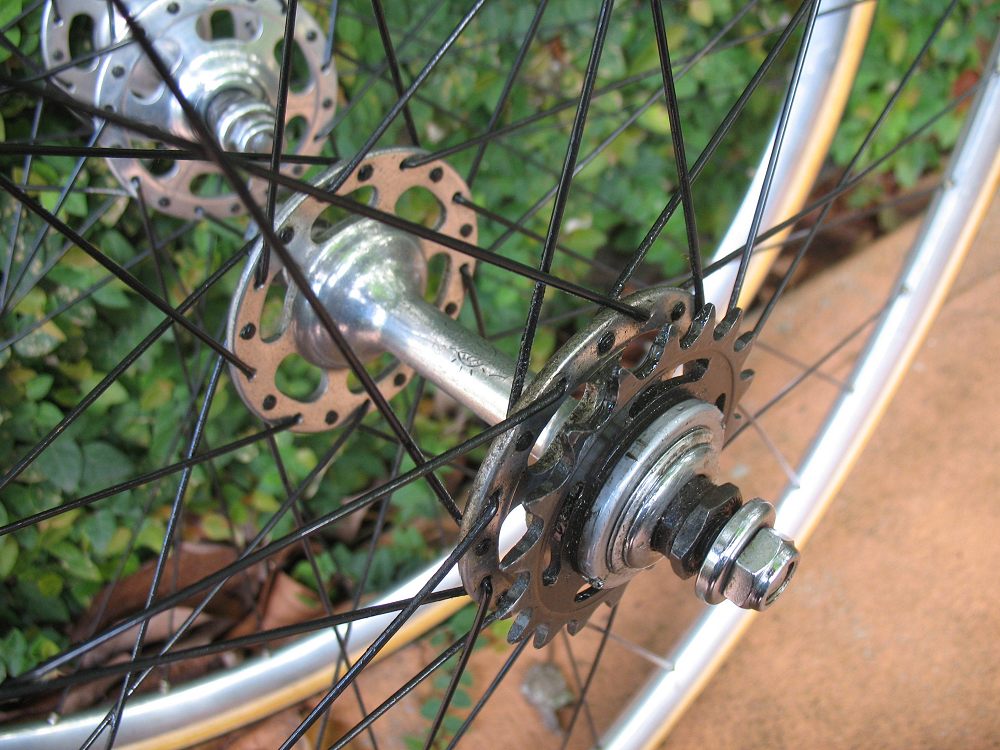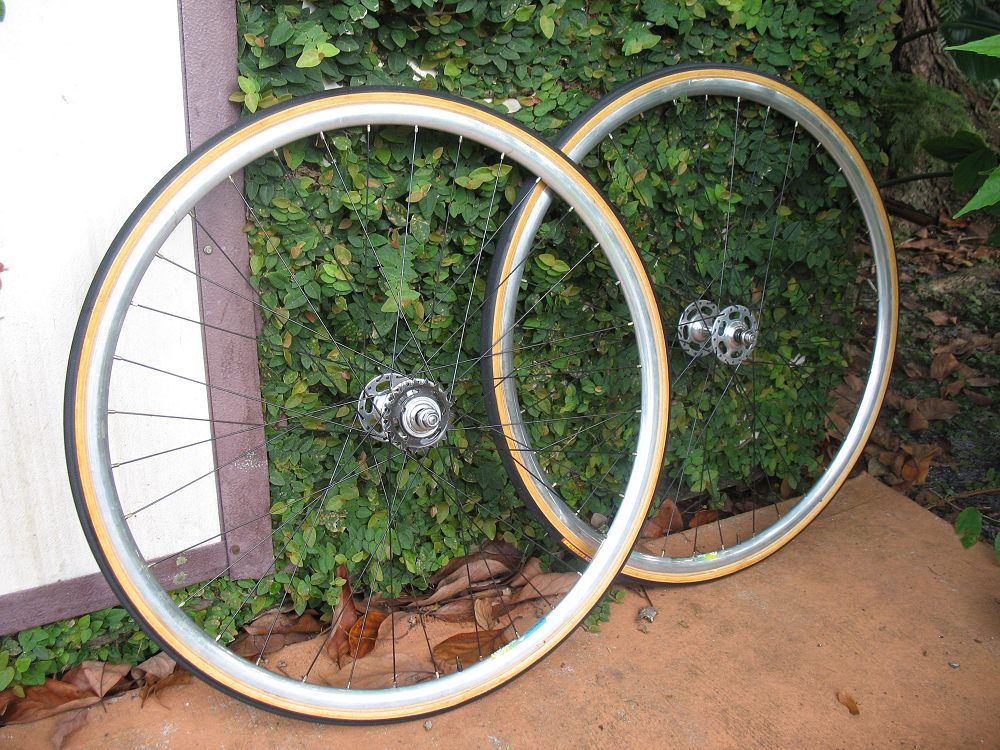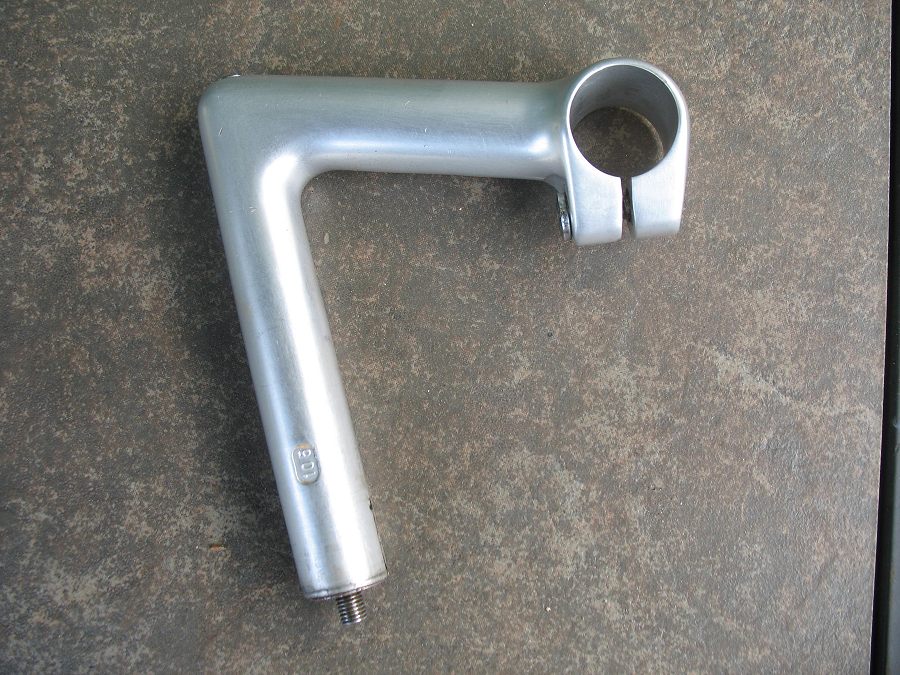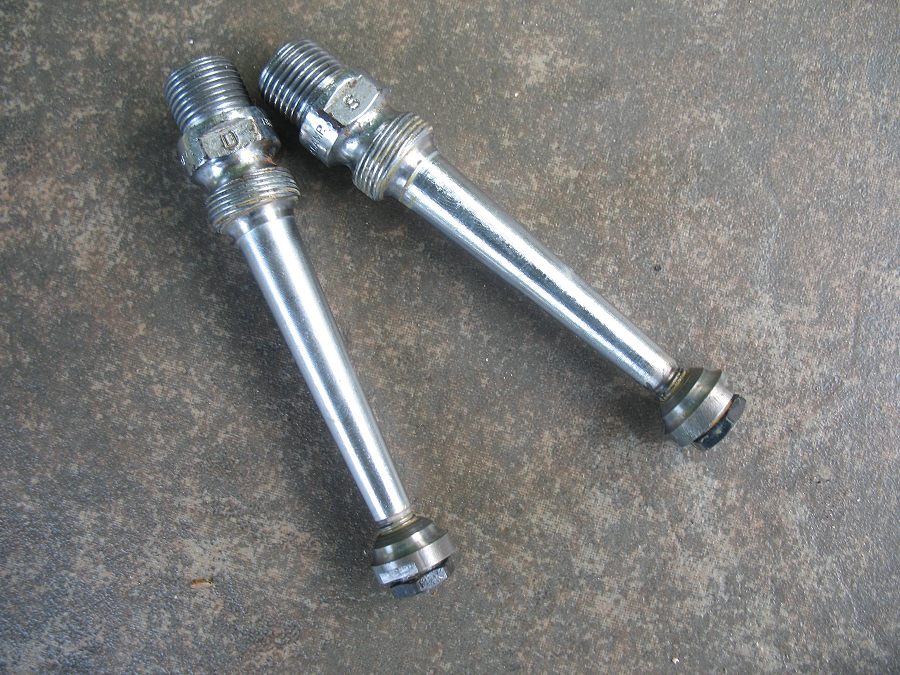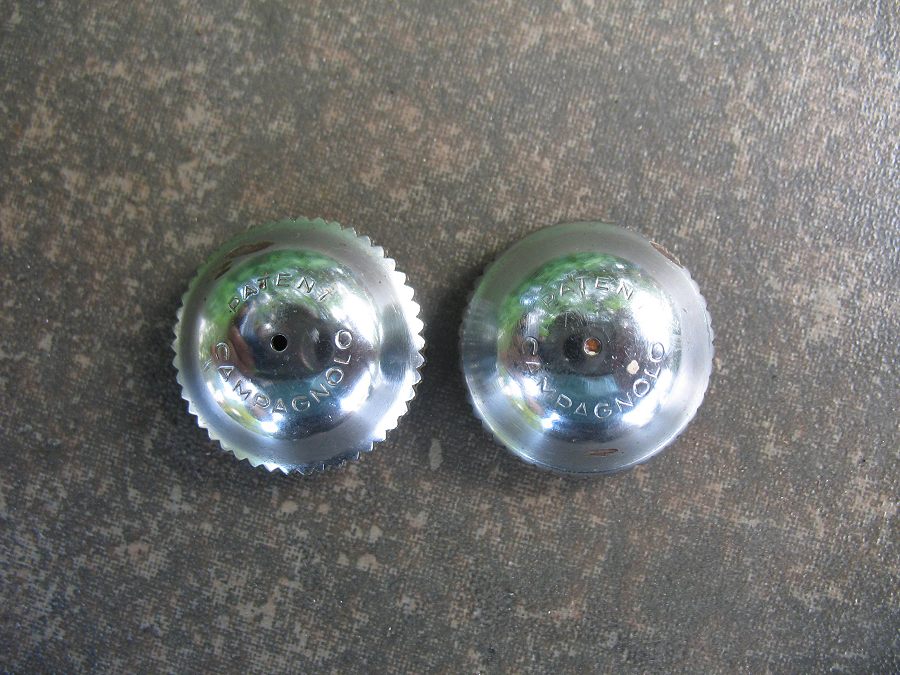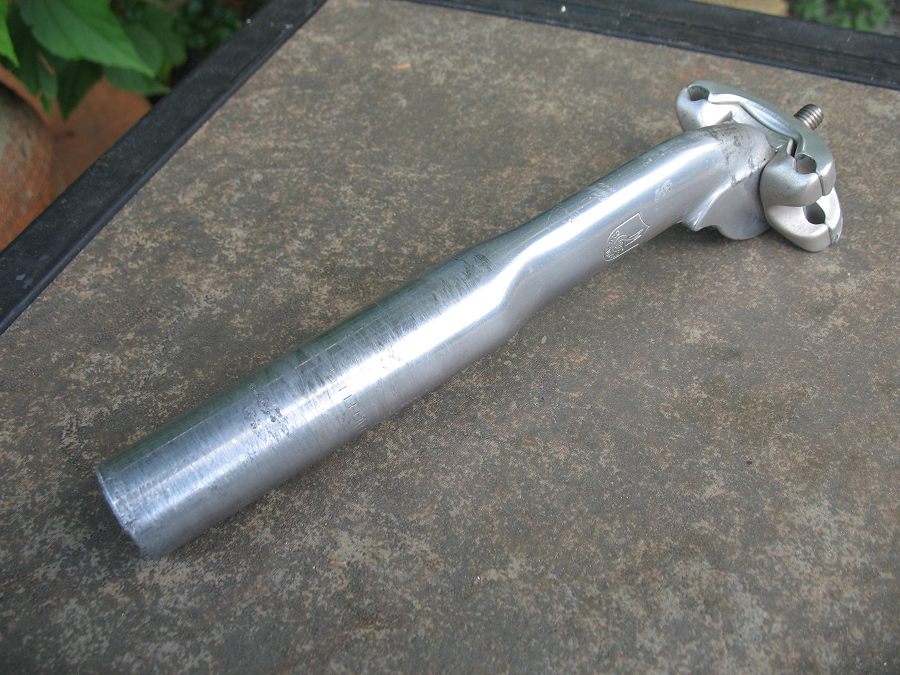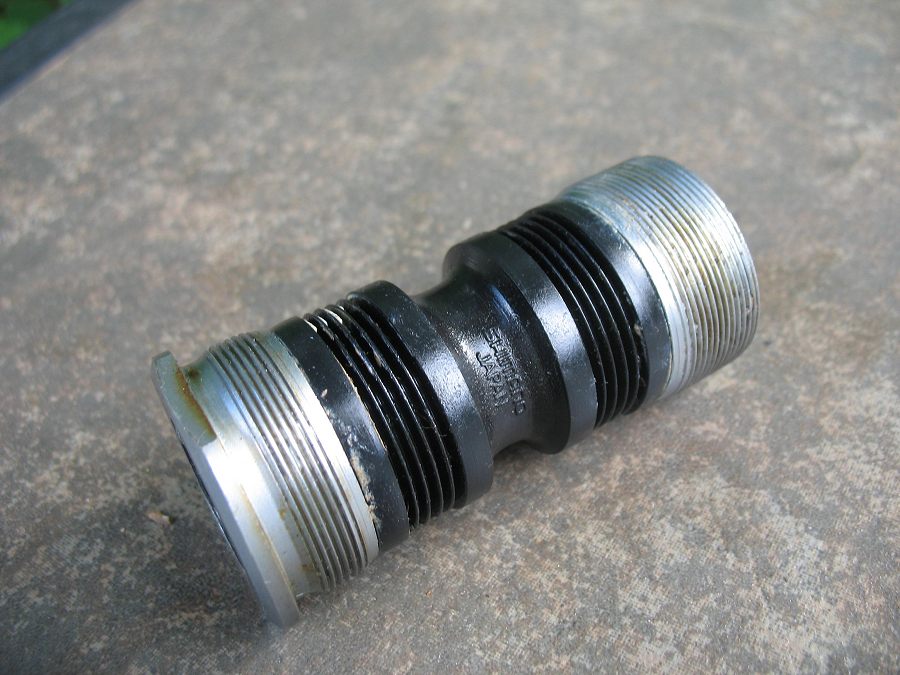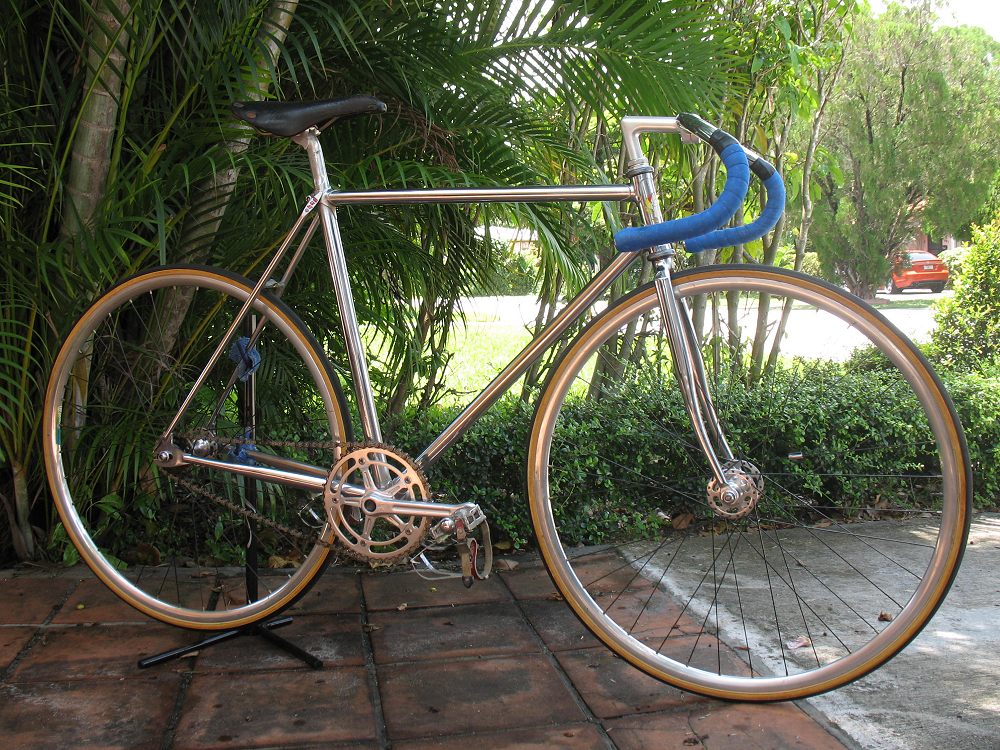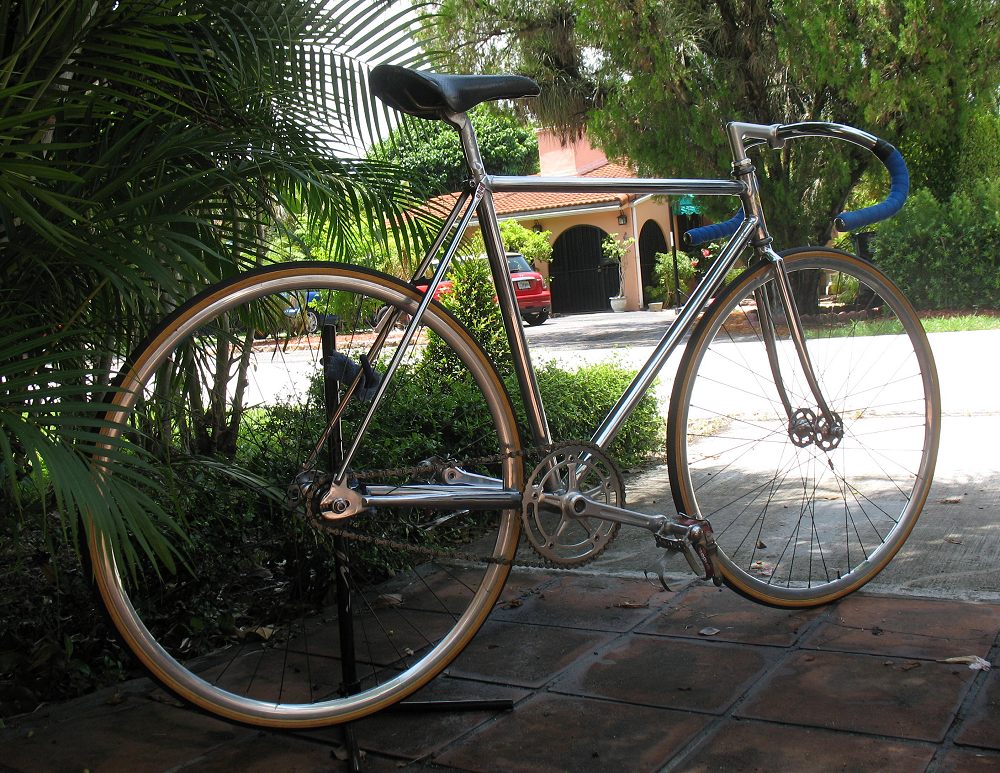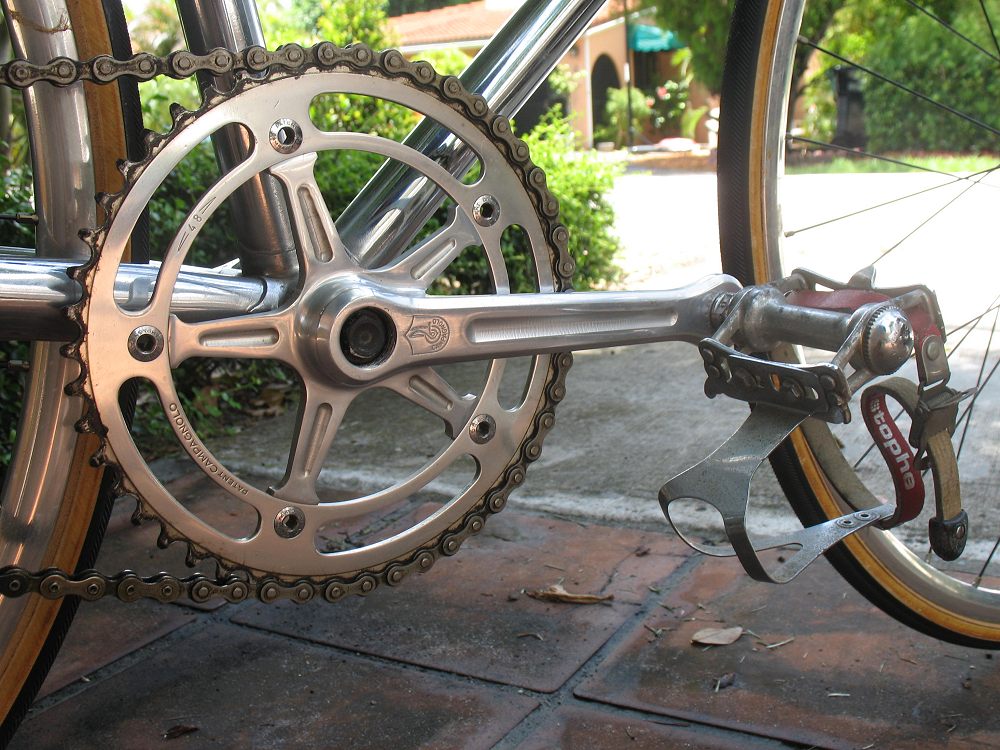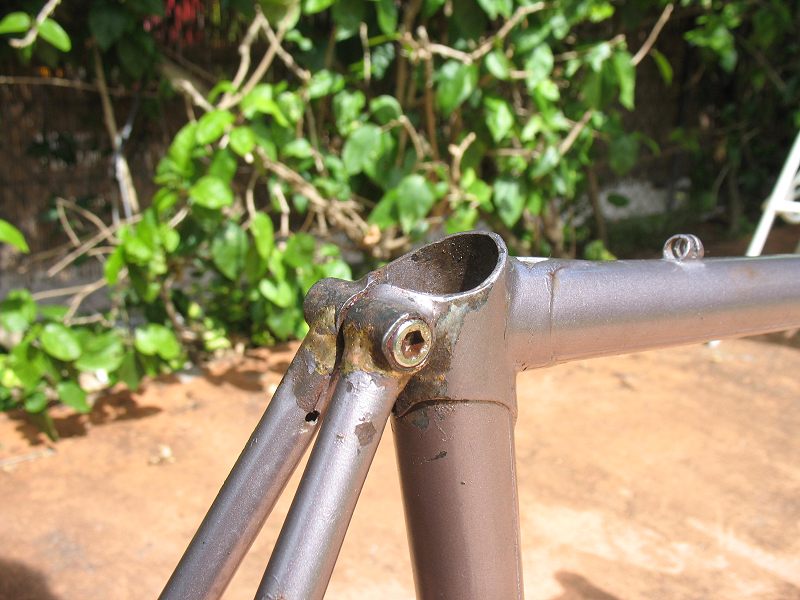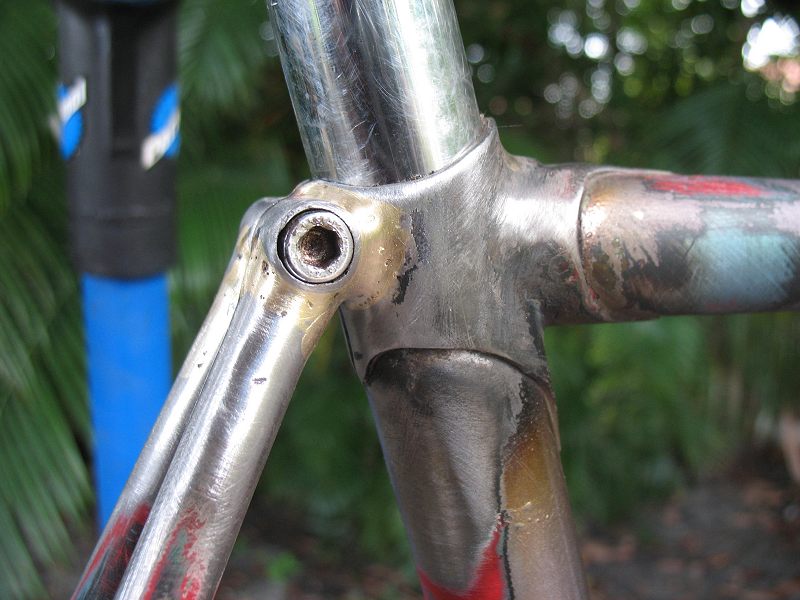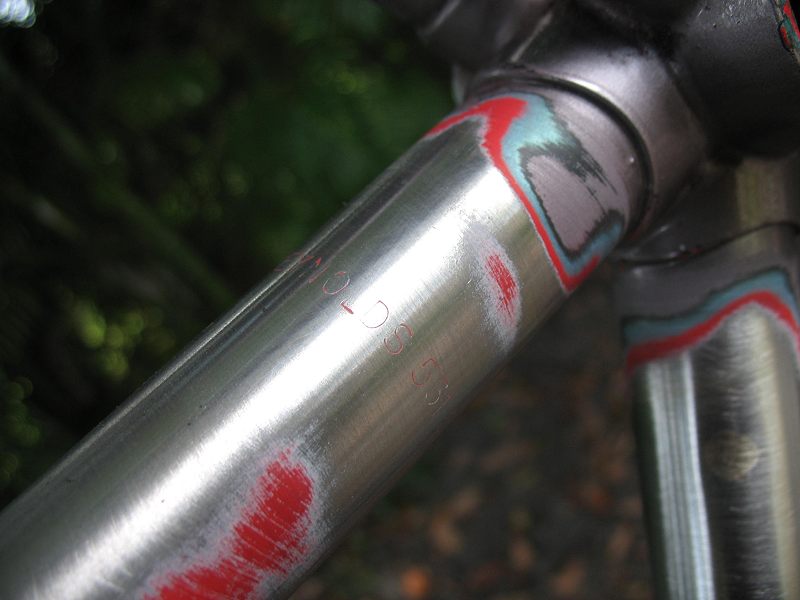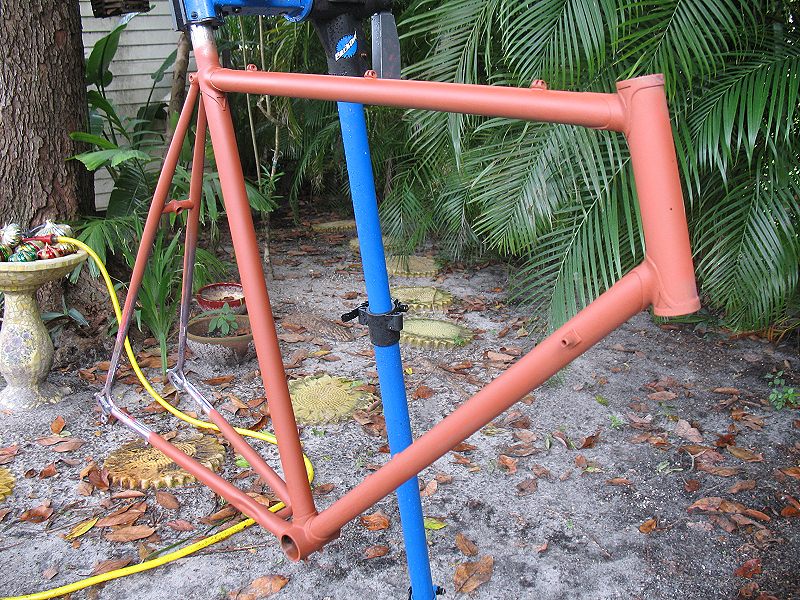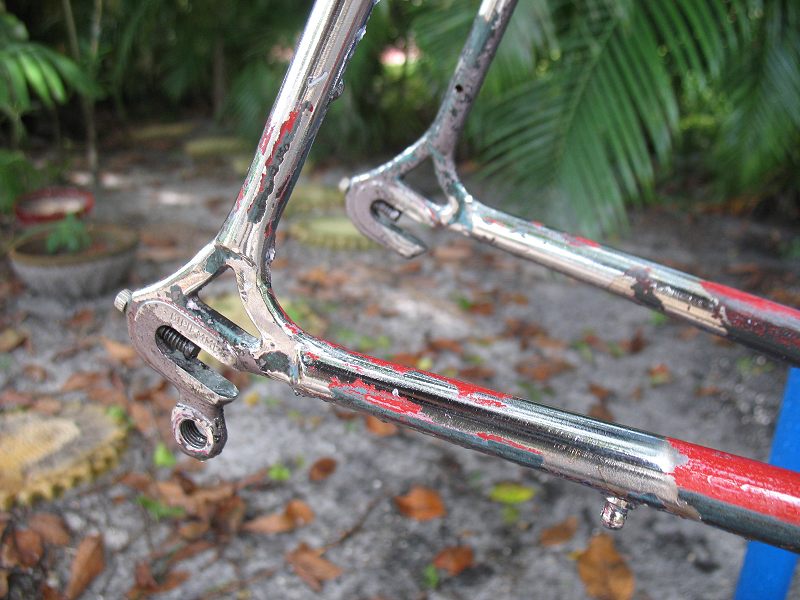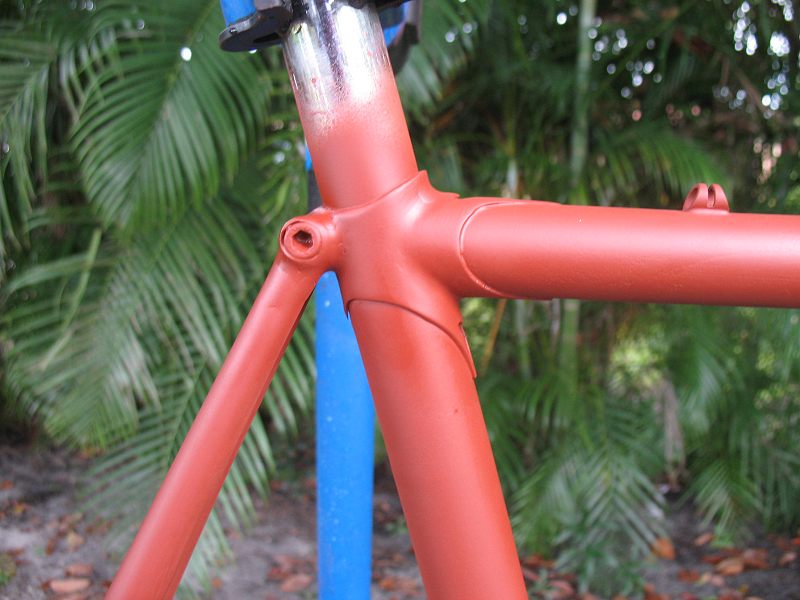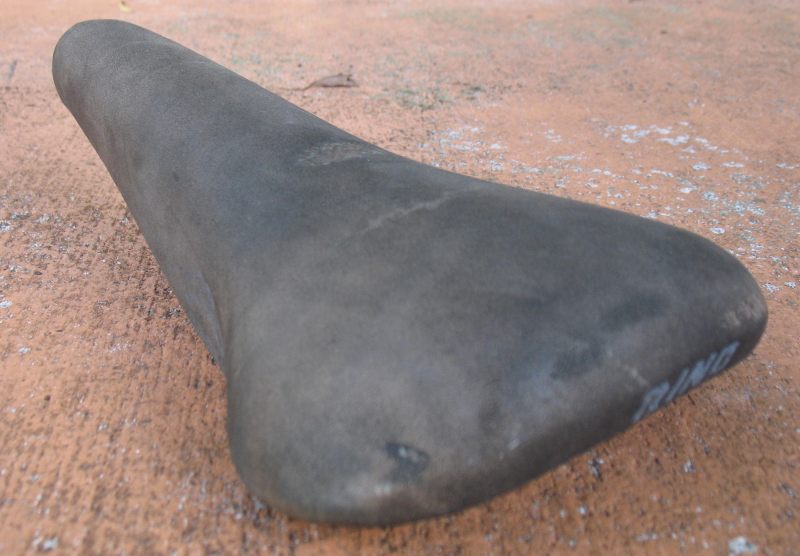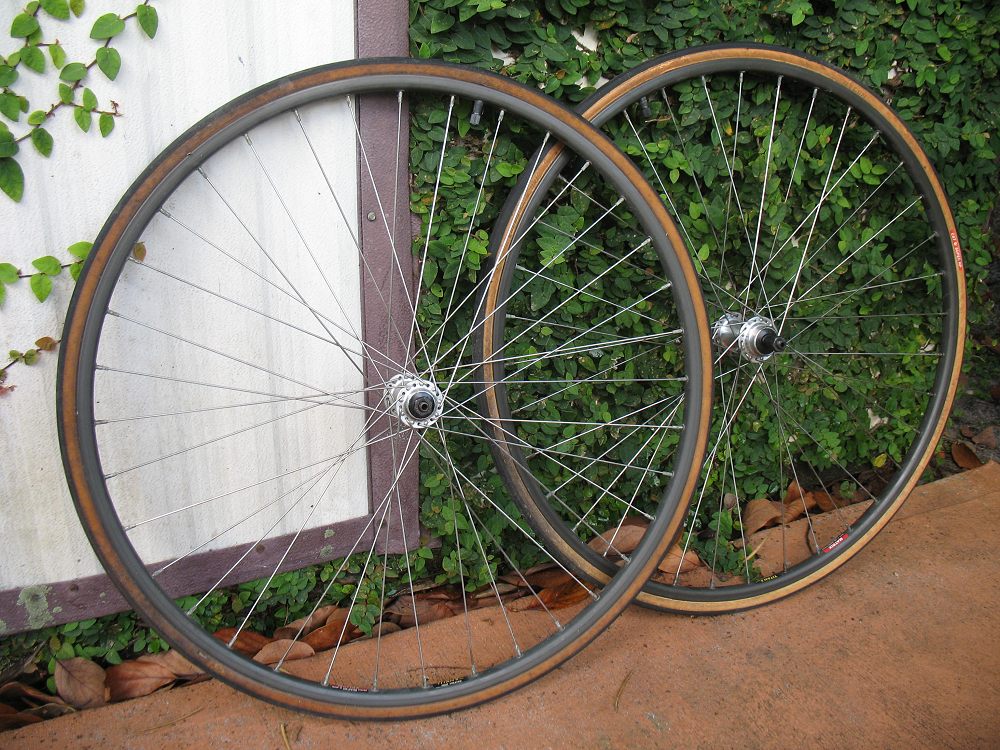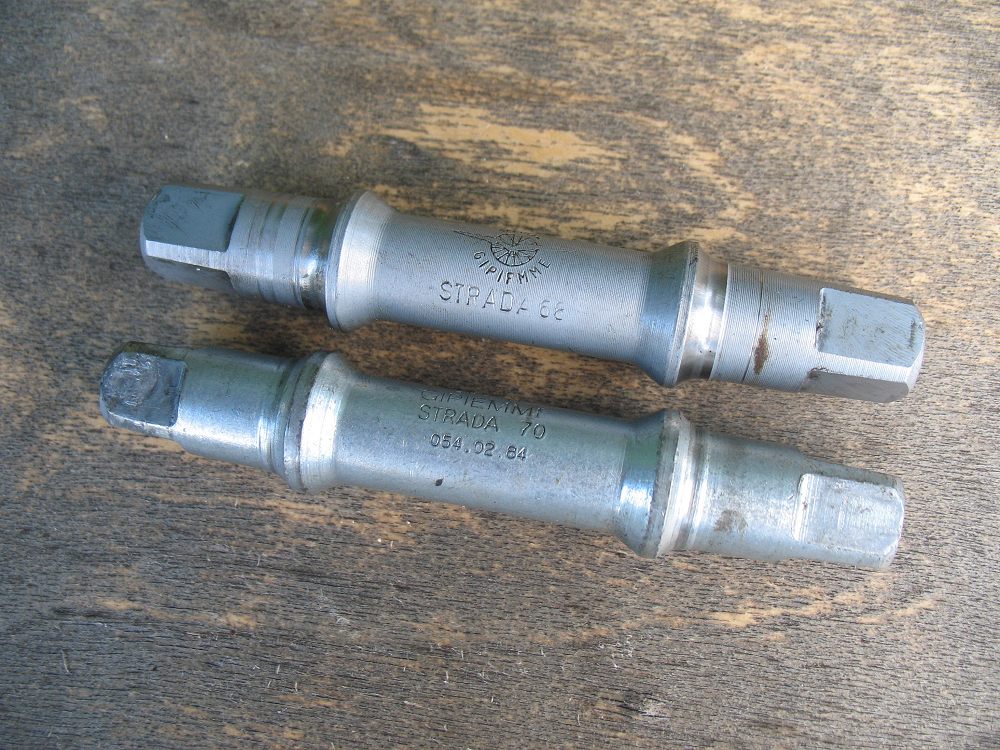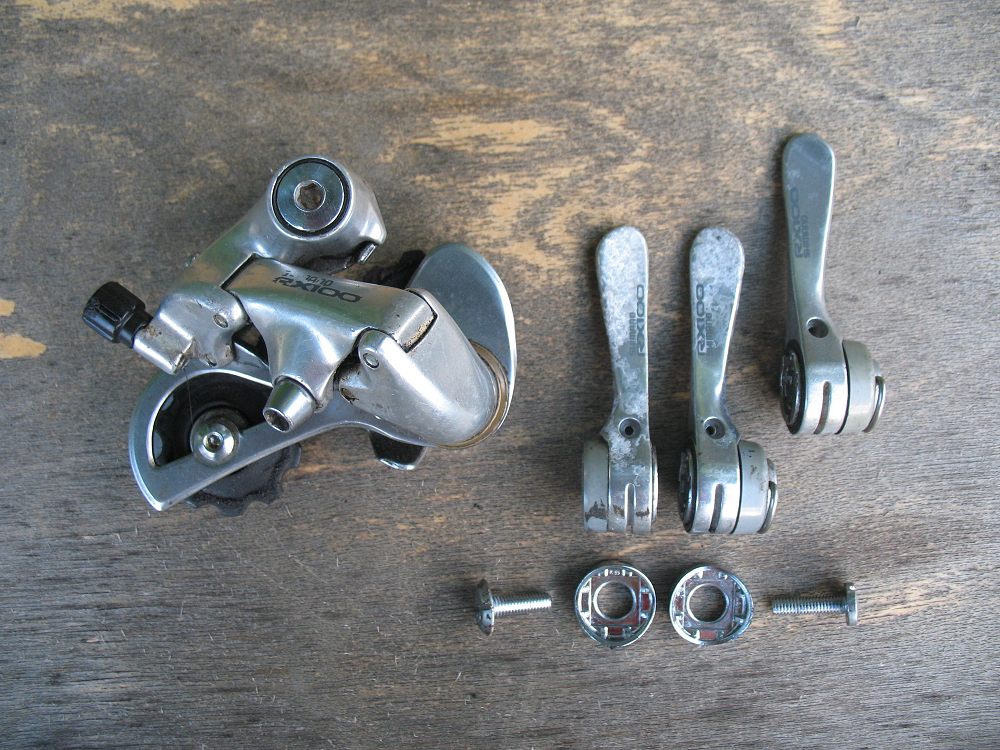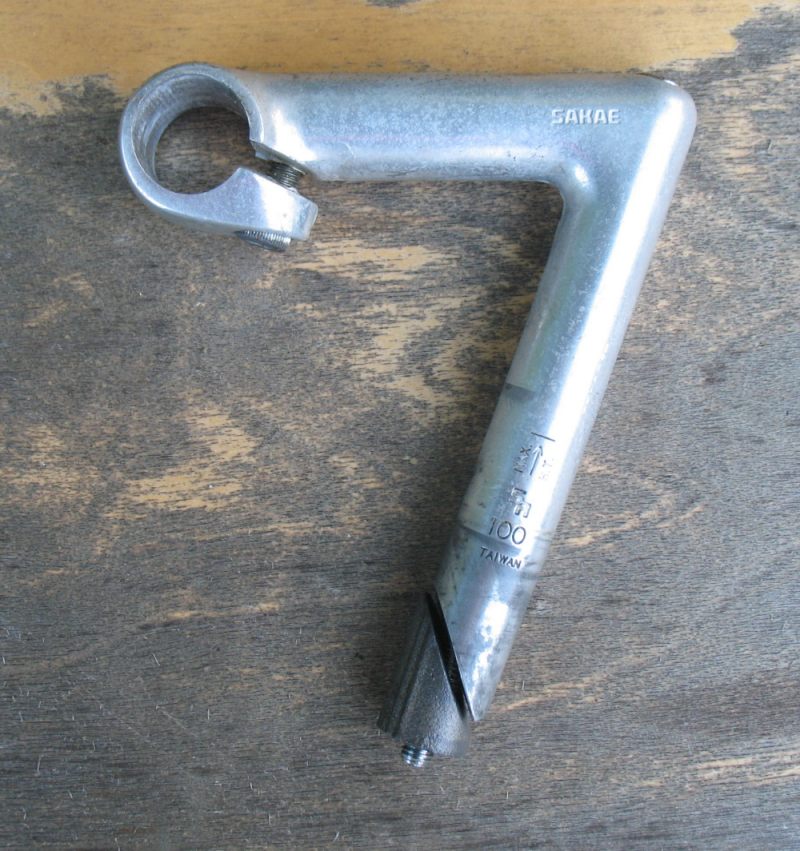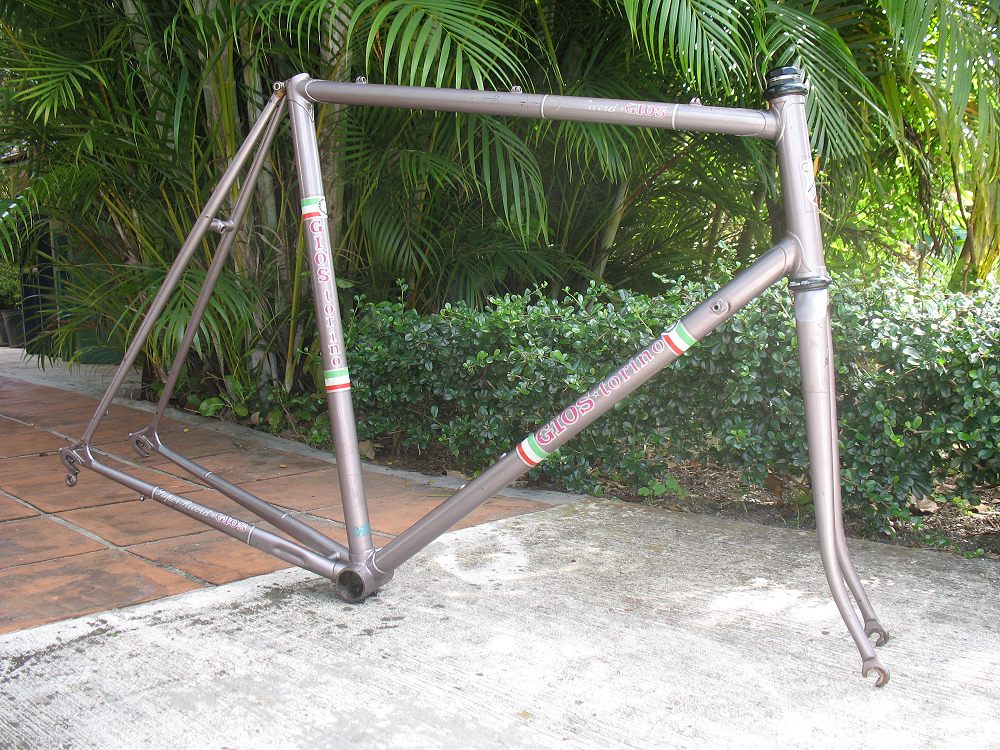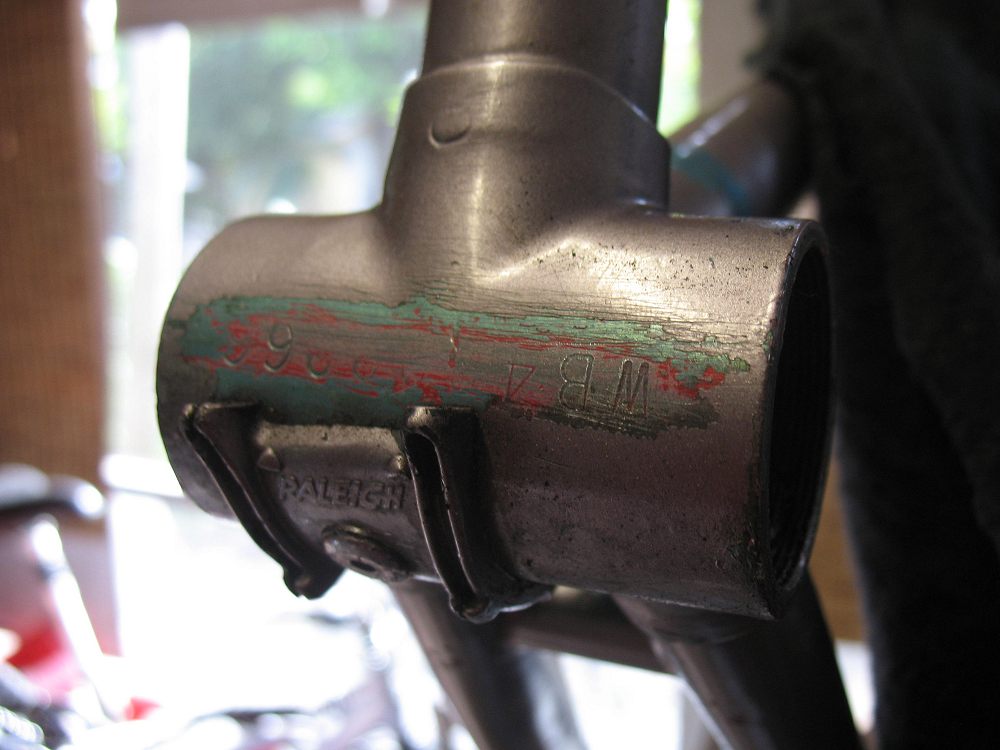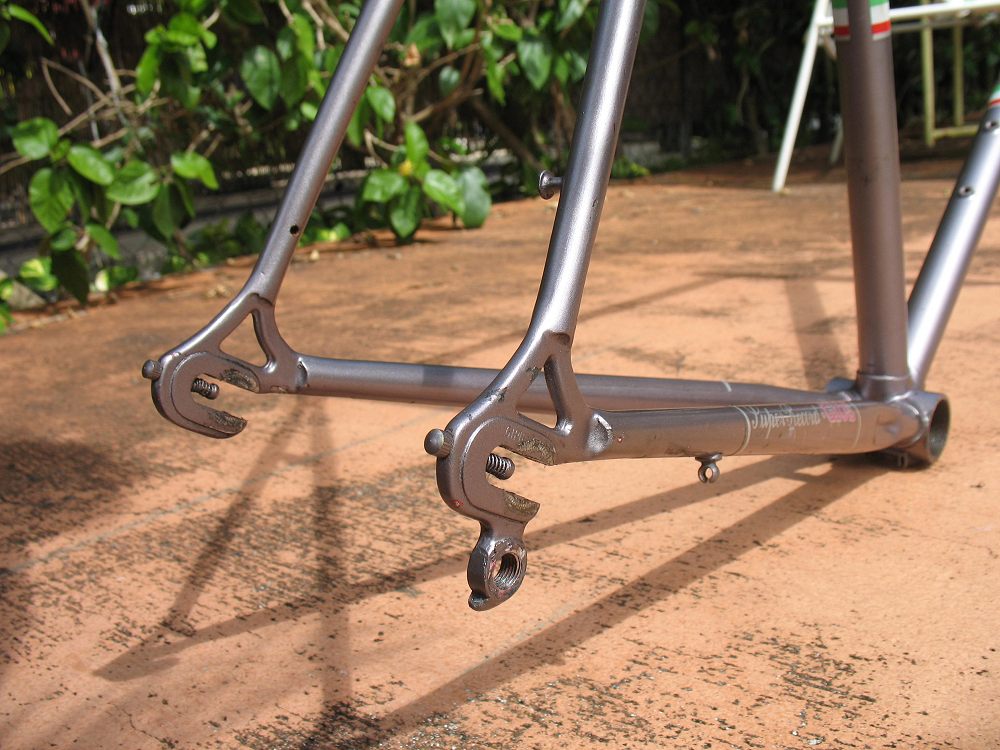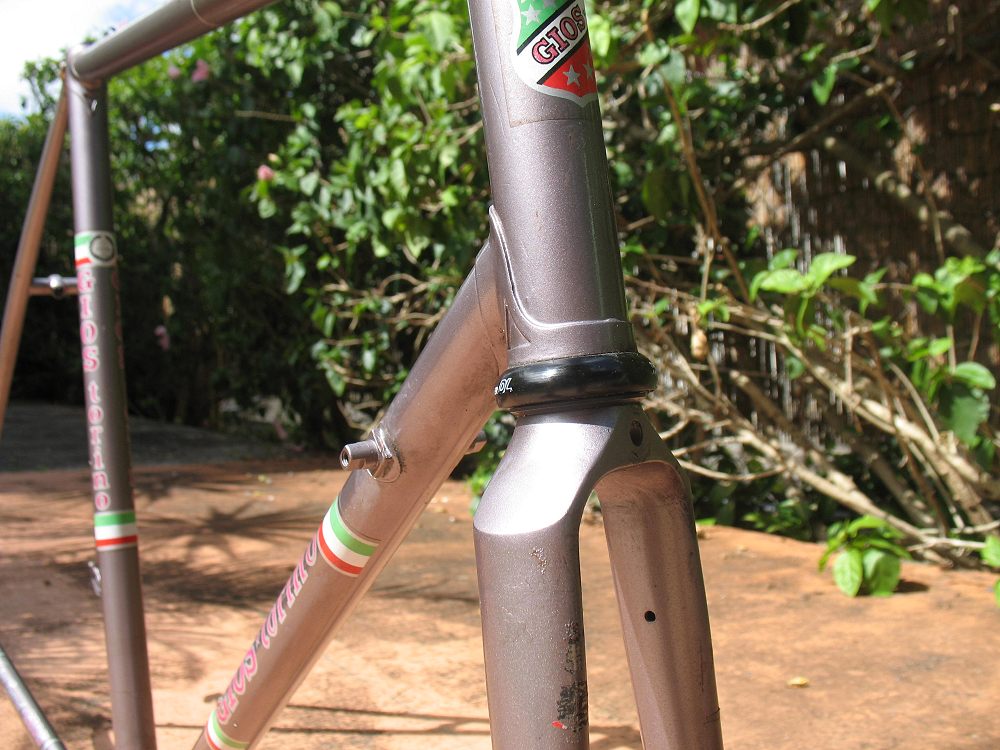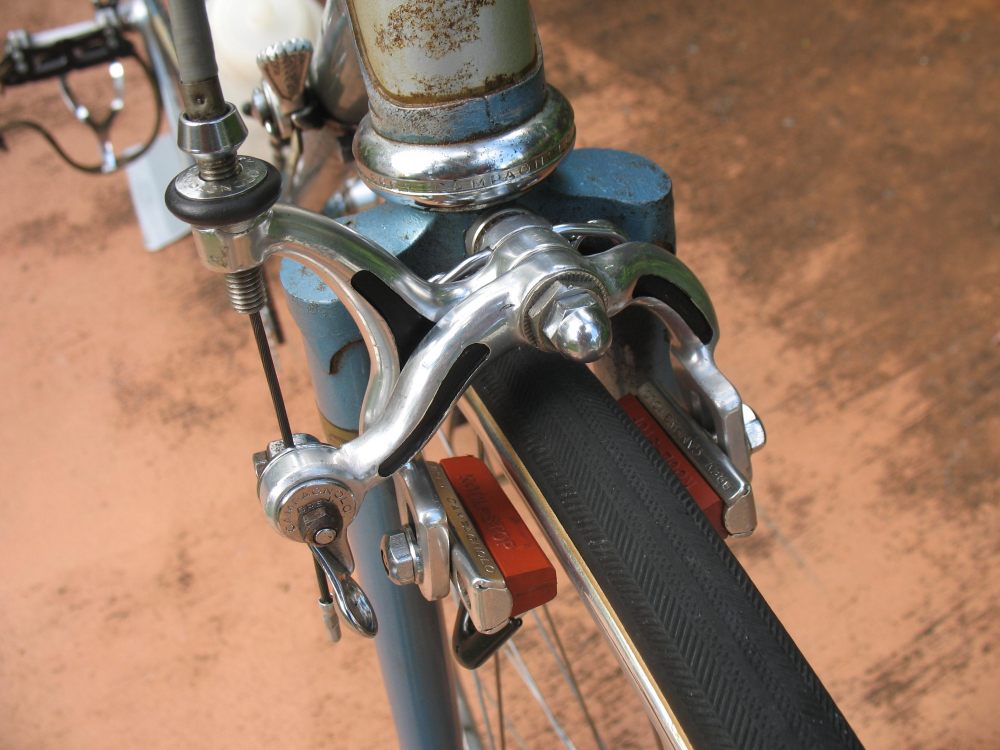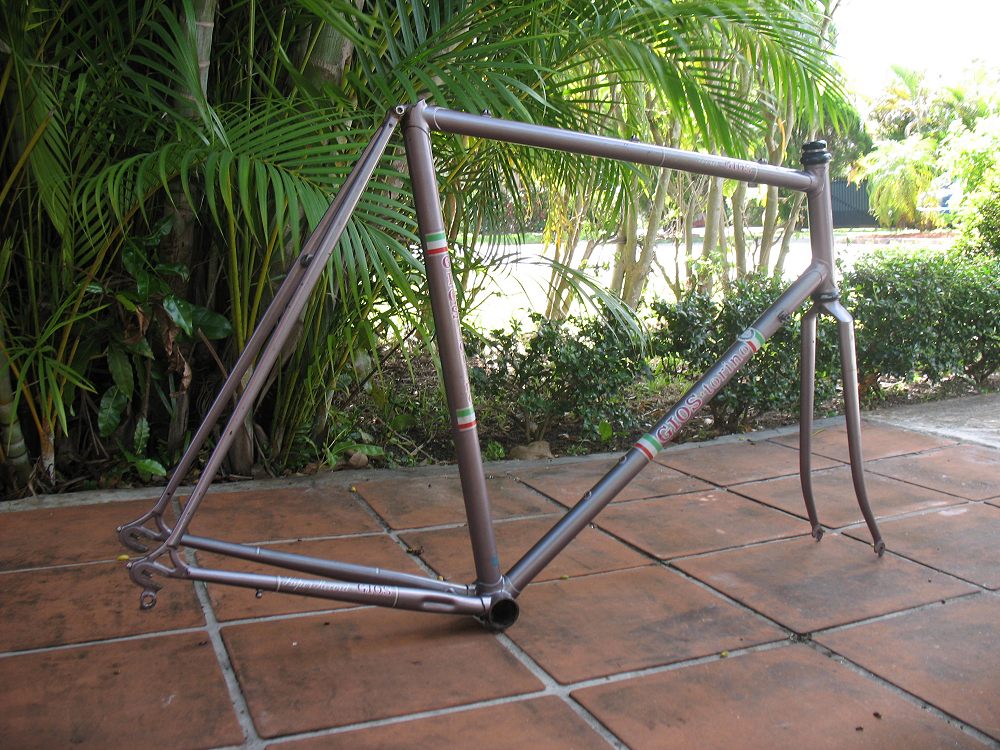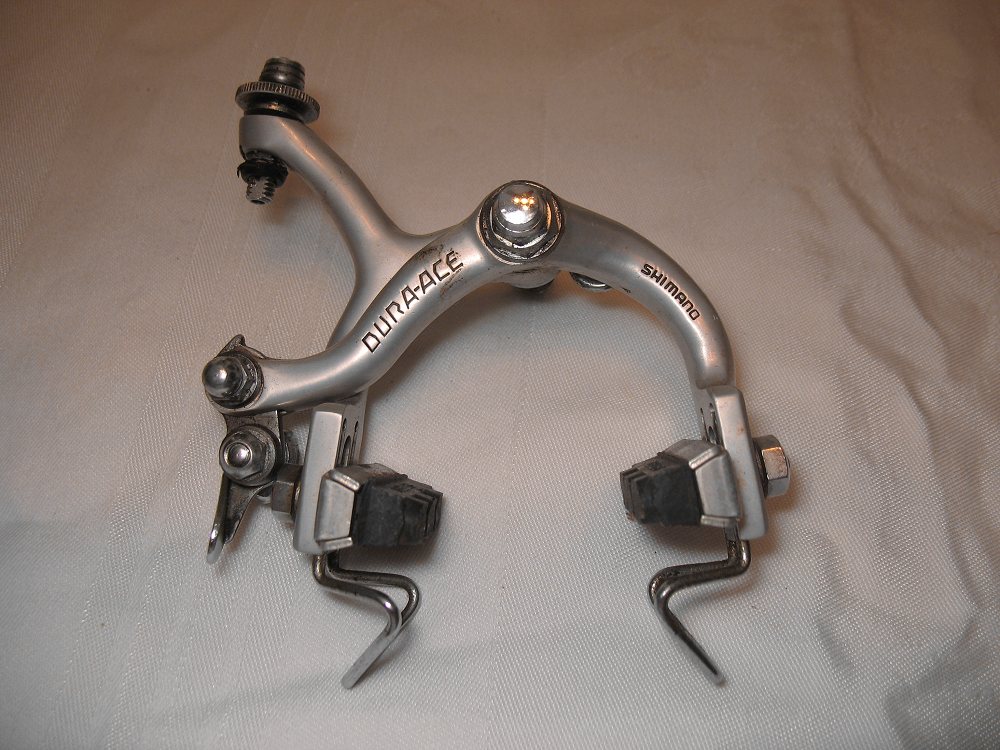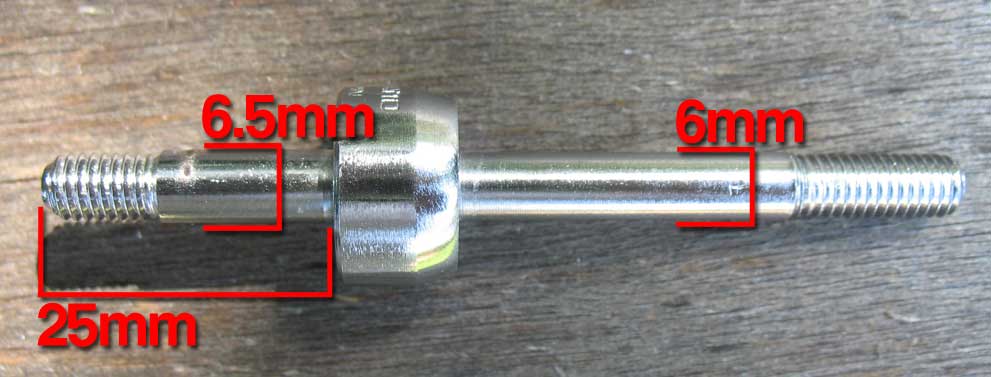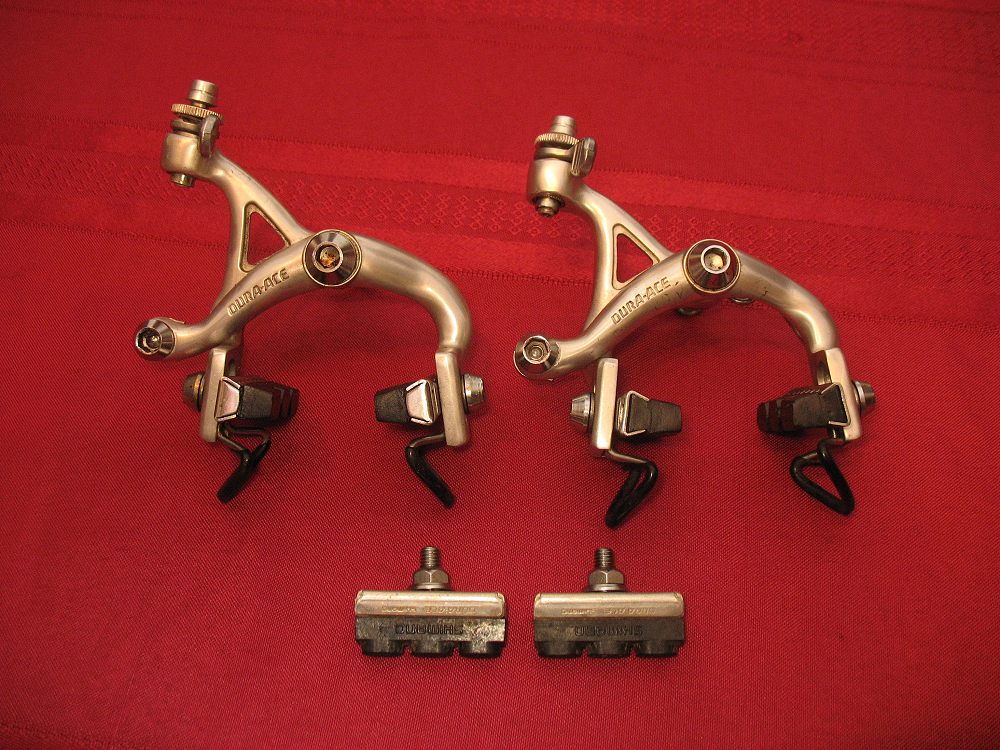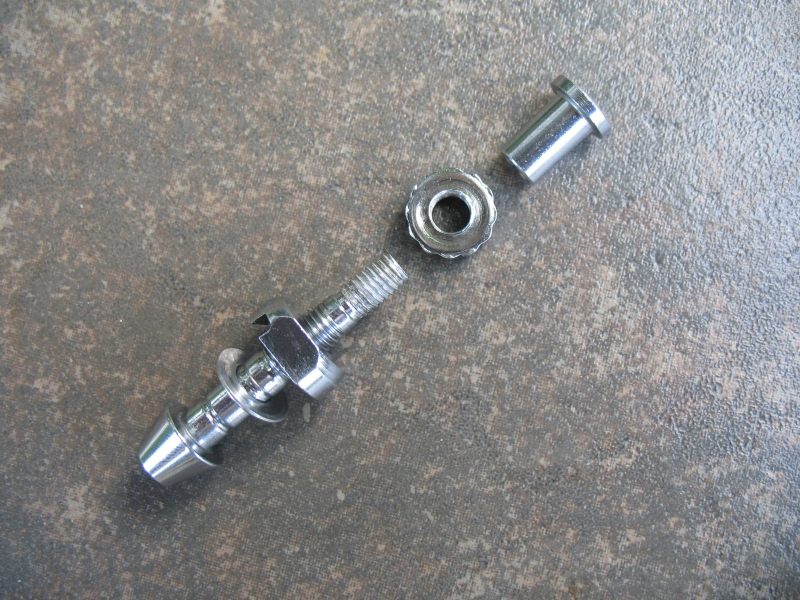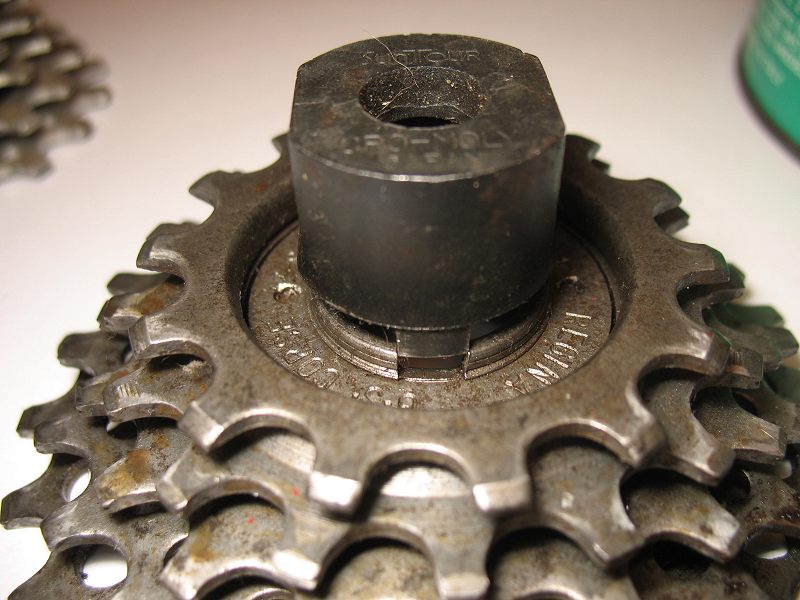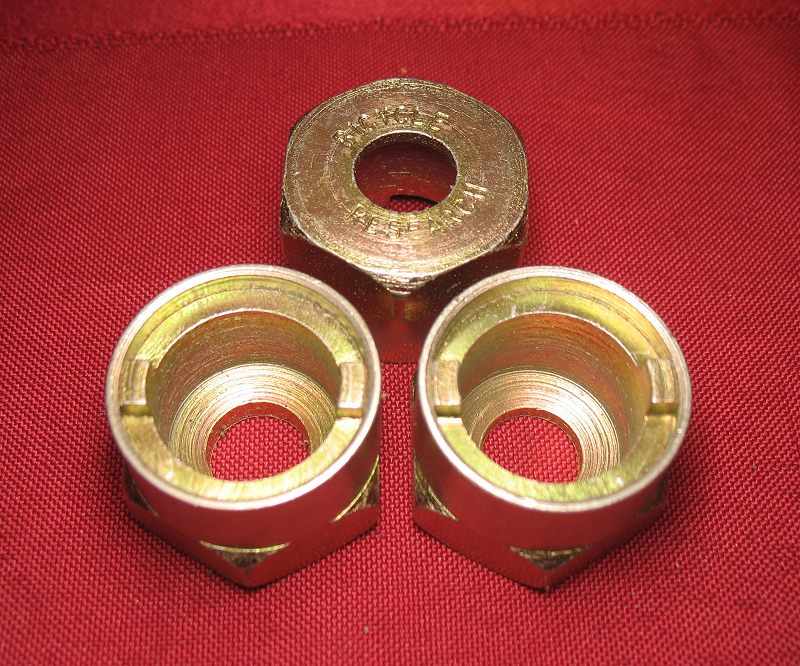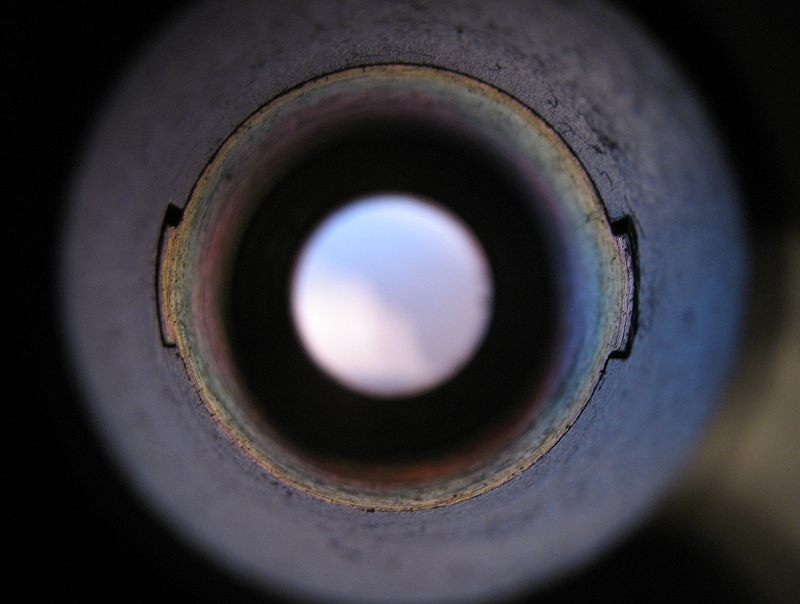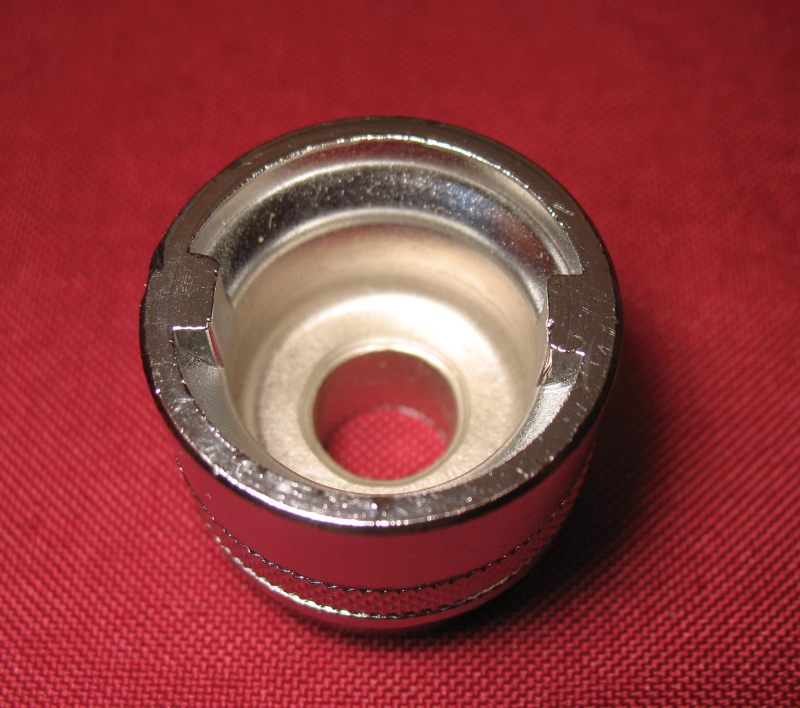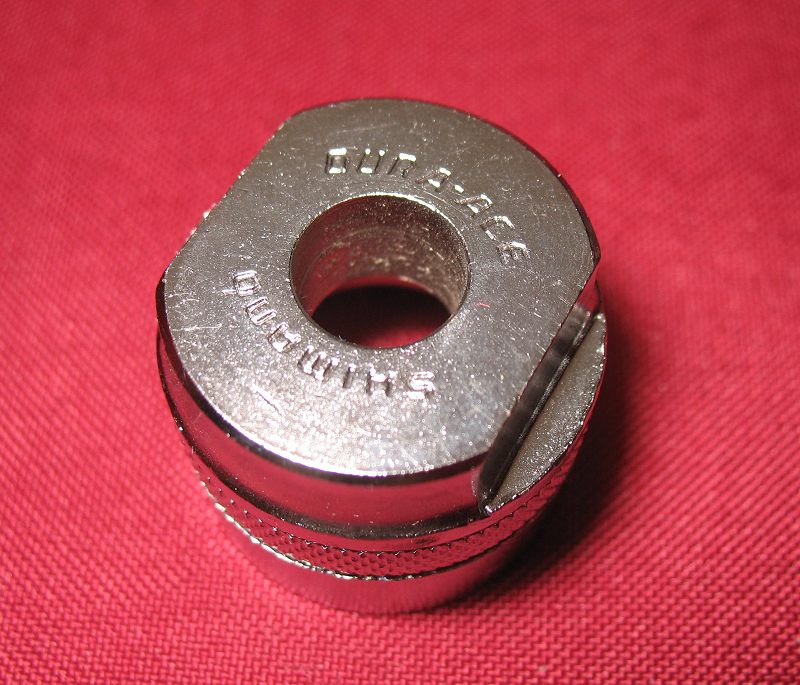...or at least since they entered the American market.
Shimano's early Dura-Ace brake calipers are a brilliant case in point; beginning with the first-generation B-210 / BA-100 example:
Granted, these could be
serviced like any other normal sidepull of the era, but Shimano succeeded in throwing at least wrinkle into the design to ensure that bicycle mechanics would have one more compatibility issue to deal with: A non-standard, 6.5mm shaft diameter - exclusively for the caliper arm pivot - on the mounting bolt:
With exception to Modolo, everybody else at the time was using 6mm, including Campagnolo's incomparably effective Nuovo Record calipers. Presto - a unique bolt that is incompatible with everything else.
Even Scott Corporation - who was manufacturing an aftermarket drop bolt at the time - had to produce a variant of said drop bolt with a 6.5mm shaft, specifically for the B-210 / BA-100.
At least Shimano had the good sense to leave the threading to the 6mm standard.
But what did any of this prove? It obviously didn't provide any significant improvement in power transfer or vertical thrust resistance, for Shimano finally reverted to the 6.0mm standard with their BR-1050, BR-6400 and BR-7400 series calipers in the mid-1980's.
Near as I can figure it, Shimano proved nothing - except to make spare parts difficult to come by 30 years later.
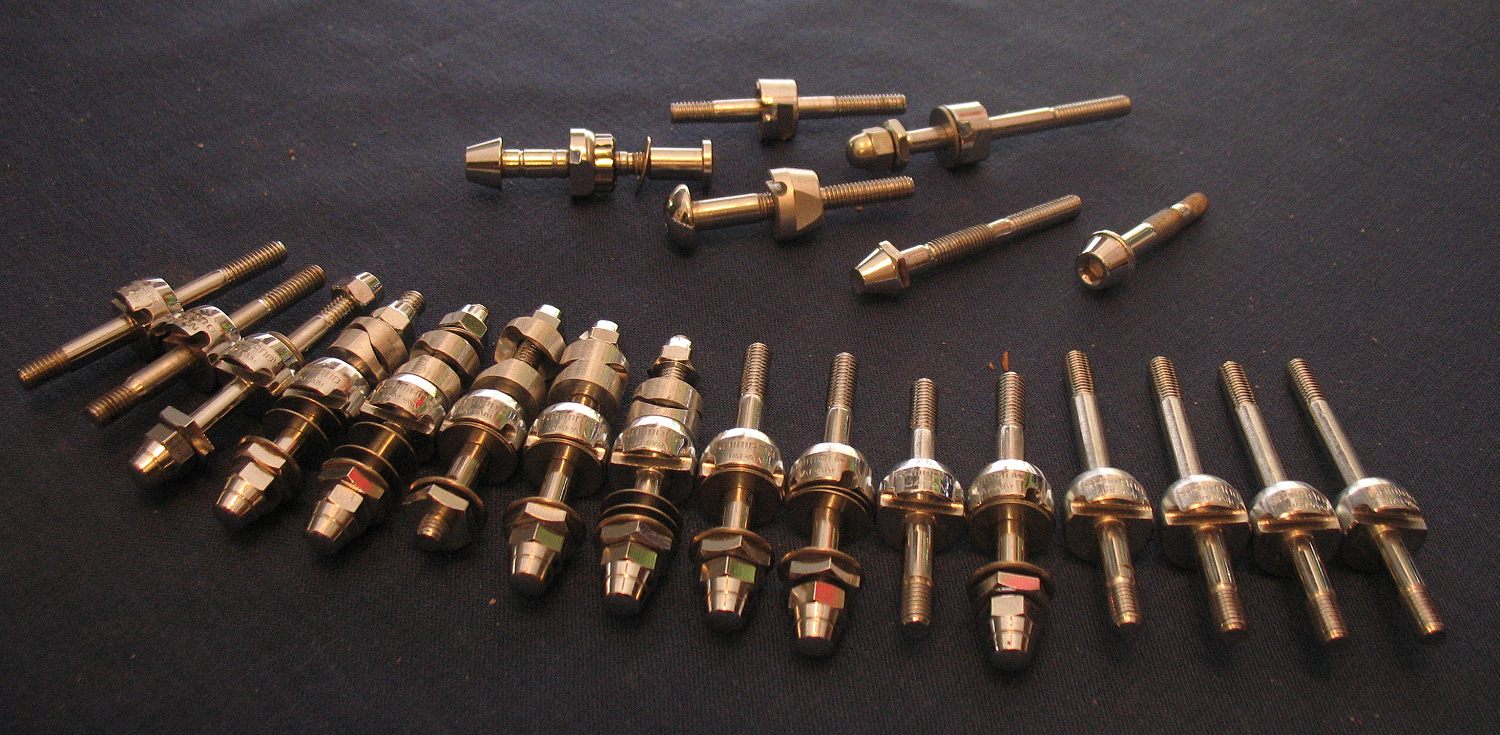
Or not. I recently happened across quite a few NOS replacement bolts at a local shop; undoubtedly rendered quite useless to anything but a first-gen DA caliper with a bent bolt. Not your common bike shop repair in this day and age. I bought the entire lot, but being a Campagnolo enthusiast, I often ask myself why I did so.
The 6.5mm standard wasn't enough for Shimano though. Bring in the year 1978 and the replacement for the B-210 / BA-100; the Dura-Ace 7100/7200 EX brake caliper:
These were a beautiful piece of bicycle jewelry that would have put the sidepull brake caliper back 20 years, had their engineering became a de-facto standard. In fact, the spare Dura-Ace brake blocks in the photo are completely incompatible with the nearly identical examples installed in the calipers, but that's another story.
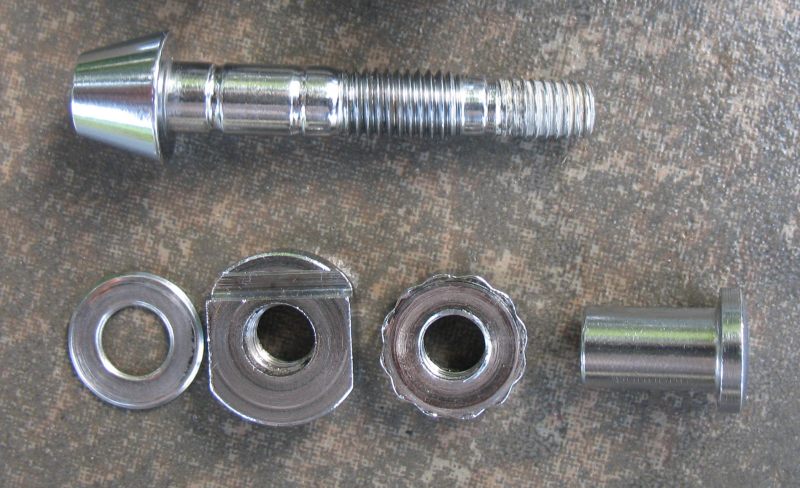
As if the B-210 / BA-100 hadn't complicated the world enough, Shimano's engineering team came up with this disaster for the 7100:
If the above photo makes no sense, this is the order in which the parts fit together:
It looks innocuous enough once you realize how the parts go together, then you realize that the caliper arm thrust adjustment is
not adjustable without taking the caliper off the bicycle for servicing. Instead of having a pair of hex nuts at the front of the caliper, the spring centering nut and the star-shaped nut thread on from the back and tighten against each other, providing the same function.
It sounds easy enough in writing, until you realize that you probably don't own the special star-shaped Shimano wrench to tighten the star locknut*, and neither can you perform the adjustment without removing the caliper off the frame entirely.
Just the thing to make a mechanic's day. Shimano, the bicycle man's Apple.
*On a positive note, a Brooks saddle nose wrench can be used on that star nut to moderate success, though the fit is loose enough that one must be careful while doing so.
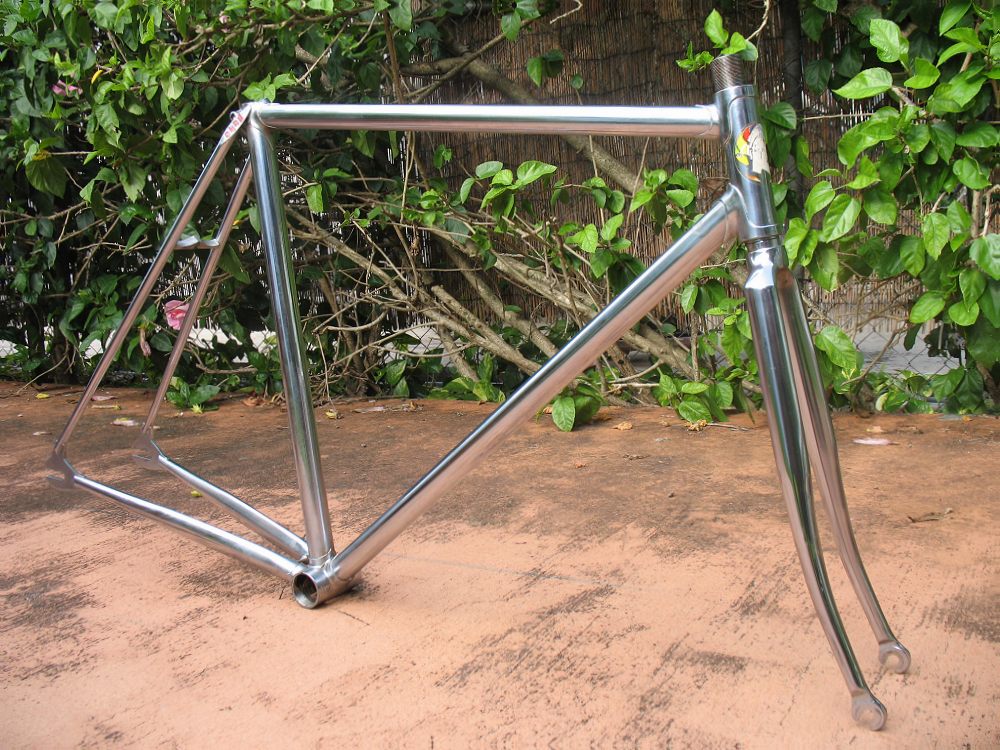 All-chrome Raul Mesa RDM Pista frameset, made in Medellin, Columbia.
Genuine track frame with track geometry. Seattube is 51cm CTC (53cm
CTT); top tube is 54cm CTC. Fork and frame carry matching serial number
#0034.
All-chrome Raul Mesa RDM Pista frameset, made in Medellin, Columbia.
Genuine track frame with track geometry. Seattube is 51cm CTC (53cm
CTT); top tube is 54cm CTC. Fork and frame carry matching serial number
#0034.